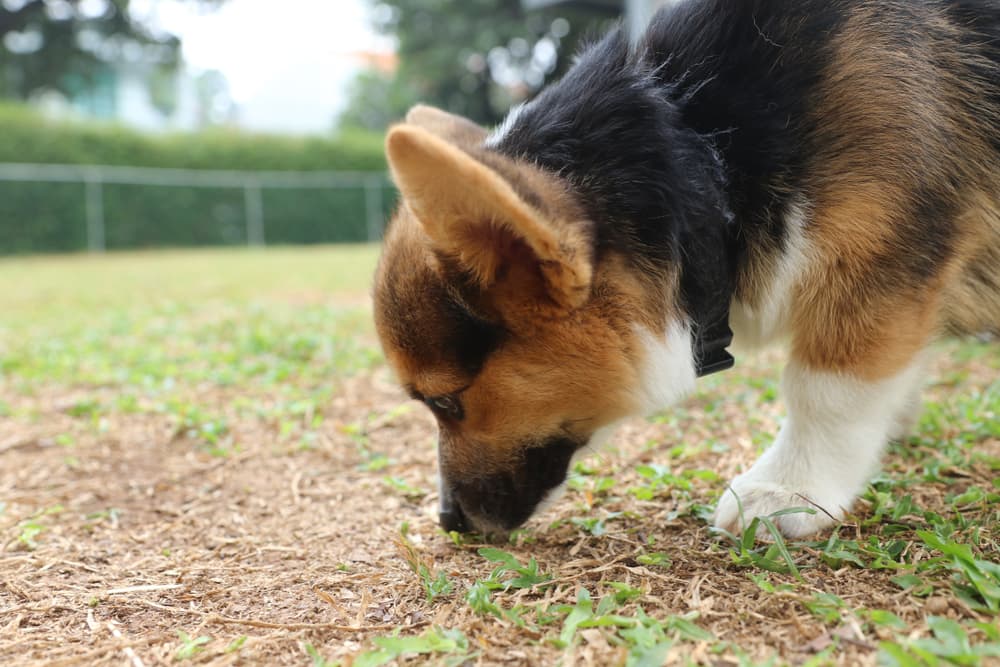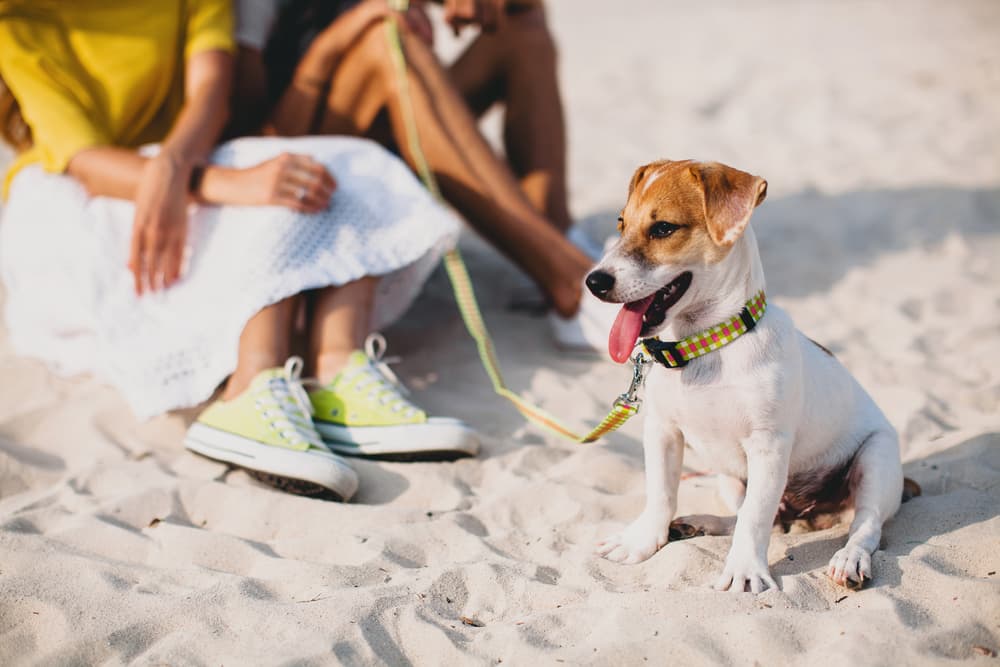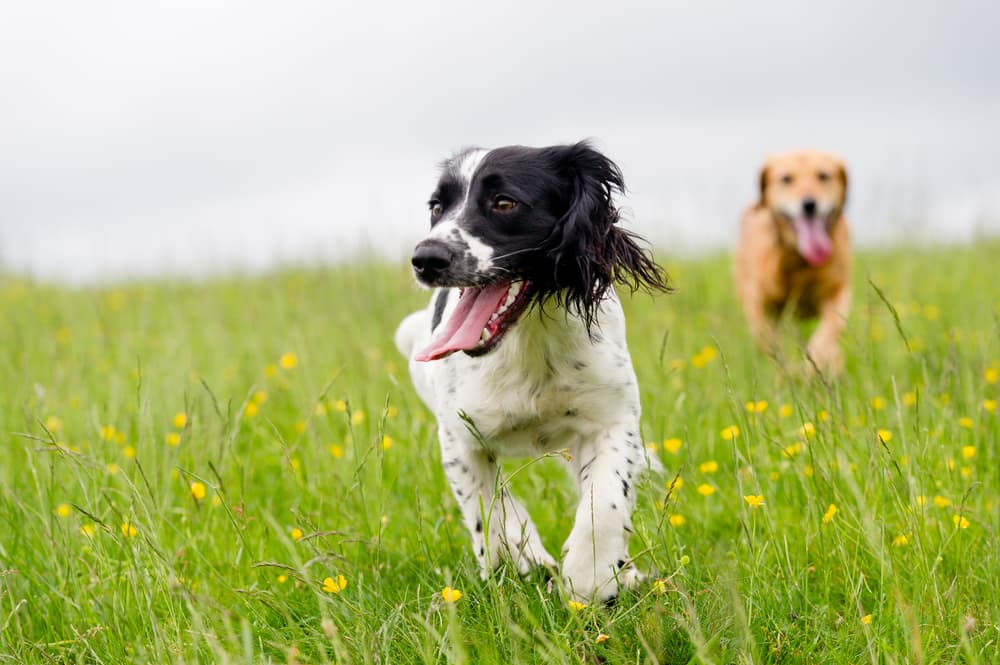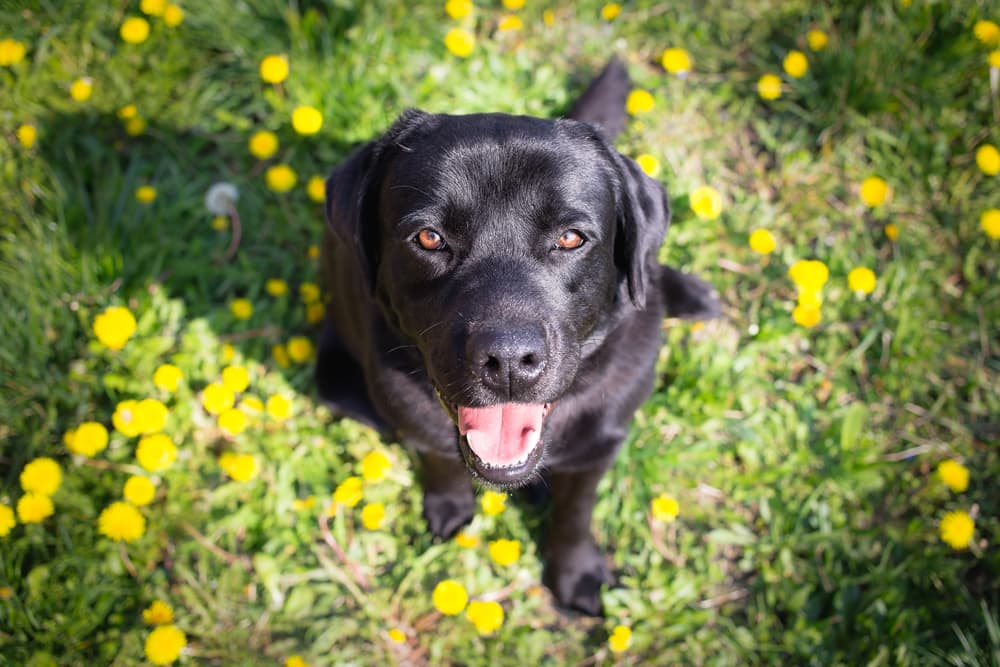Sponsored by Elanco
Walk Etiquette for Dogs: 4 Must-Know Commands
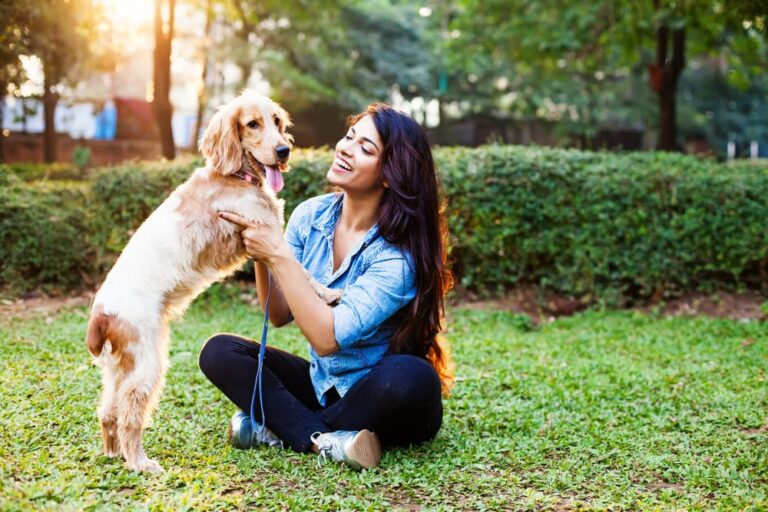
There’s nothing quite like watching a group of dogs playing together on a walk. Spending time on a walk helps to keep a dog’s socialisation skills in top form and can tire out a dog in a way that walks around the road can’t.
Dog play can look intense, but it shouldn’t be a lawless free-for-all. That’s why both dogs and pet parents need to abide by very important unwritten rules to ensure safety at both ends of the lead.
Helping your dog master these must-know commands will ensure playtime is fun and stress free.
Walk Etiquette for your Dog
Before heading to the woods, field, common or other open space, consider the following unwritten rules to determine if park play is right for you and your canine companion.
Will your Dog Have Fun?
It may come as a surprise to realise that not every dog enjoys spending time socialising on a walk. The best dogs for this are well socialised, welcome interactions with other dogs and understand how to play appropriately.
Puppies should only go out on walks once they have completed their vaccinations, your vet will be able to advise how long to wait after this. It is really important that puppies go out and socialise as soon as it’s safe, it is a very important step in their development.
Is the Outdoor Area Suitable?
The best areas for dog walks are frequented by responsible pet parents who are willing to pick up poo and stay in tune with their dog’s behaviour and etiquette.
Some common areas are designed for young families and don’t allow dogs such as the play area, whilst others may have special “off-lead” areas.
Do you Understand Canine Body Language?
Dog play can be rowdy and is easy to misinterpret, which is why the human end of the lead should have a solid foundation in reading dog body language. Understanding the difference between play fighting and the real thing will prevent misunderstandings.
Is your Dog Protected Against Parasites?
 When dogs spend time outside socialising with other dogs or playing where other animals have been, they can be exposed to potentially harmful parasites. In a recent study of 288 parks across the U.S., more than 80 percent of parks had at least one dog test positive for intestinal parasites.1 It’s incredibly important to keep your dog and other dogs safe by ensuring they have adequate year-round protection from internal parasites like lungworm, roundworm, and tapeworm. Ask your vet about the right parasite protection for your dog’s lifestyle.
When dogs spend time outside socialising with other dogs or playing where other animals have been, they can be exposed to potentially harmful parasites. In a recent study of 288 parks across the U.S., more than 80 percent of parks had at least one dog test positive for intestinal parasites.1 It’s incredibly important to keep your dog and other dogs safe by ensuring they have adequate year-round protection from internal parasites like lungworm, roundworm, and tapeworm. Ask your vet about the right parasite protection for your dog’s lifestyle.
Also, don’t forget about the hazards of external parasites like ticks and fleas. Talk to your vet about a tasty chewable tablet that protects against ticks and fleas.
Your pet should also be up-to-date on vaccinations, based on the recommendations of your vet. If your dog is going to be playing with other dogs at the park, or going to doggy day care, getting the kennel cough vaccination should be considered. This vaccination is not routinely given to dogs in the UK, so you should check with your vet if you’re not sure your dog is covered.
1Elanco. Data on File.
Walk Etiquette for Dogs: Must-Know Cues
The true test of basic manners training is taking obedience skills on the road and using them in the real world. That said, the park is one of the most distracting training environments possible, especially when other dogs are around.
Before attempting training cues on a walk, take the time to perfect them in and around your home so that your dog has a strong understanding of what’s being asked of them.
Keep in mind that dogs don’t always generalise their lessons to all locations, so a perfect sit in your garden might fall apart when introduced in the distraction-filled area.
But before you head to your local woods, here are the top dog training commands you should work on with your dog.
Sit

The very first skill most new puppies learn is to sit, but getting dogs to perform this foundational behaviour in exciting environments can be challenging.
The secret to success on a walk is using it as access to real-life rewards, meaning that when your dog does respond to your “sit” cue their “treat” is getting to do what they want. If you don’t have any food treats with you, using real life rewards is a great alternative.
When you arrive at the woods, ask your dog to sit before going in. Ask them to do it again as you take off their lead. Any time your dog runs over to check in with you, praise them, ask for a quick “sit” and then release them to go back and play.
This simple behaviour can help your dog hone their focus while brushing up on their impulse control in an action-packed environment.
Wait

Wait is a casual teach-as-you-go cue that fits perfectly in a park scenario. Not as formal as “stay,” a “wait” cue encourages your dog to hold whatever position they happen to be in for a few moments.
You can begin teaching it in the car the moment you arrive at the woods. Before your dog gets out of the car, take hold of their lead so that there’s no slack in it. Say “wait,” then gently release the tension in the lead, pause for a moment and then release your dog out of the car with a cue such as “free”.
You can add it to a “sit” cue when your dog checks in with you by asking for the sit, saying “wait” and then releasing them to go play.
Lead Training a Dog that Pulls

While it’s not necessarily a distinct command, teaching your dog to politely walk on a lead is an essential behaviour to learn before heading to the park.
Most dogs who enjoy a walk have a tough time controlling their excitement once they arrive, which usually results in an uncontrolled sprint. Allowing your dog to escalate up to a state of extreme excitement on the way for a walk can ramp up their nervous energy levels to the point where they’re out of control by the time they arrive.
The problem is that many dogs have learned that pulling works. They pull, we follow. The easiest way to help your dog understand that pulling is no longer an option, is by making it have the opposite effect. Instead of bringing your dog closer to going on a walk, it actually makes them lose ground.
The moment your dog begins pulling, meaning the lead is taut in a straight line, walk backwards and away from your destination. It’s important that you don’t just turn around, as your dog might think you’re opting for a different route. The key to this exercise is showing your dog that pulling is taking them farther away from their goal.
The moment the lead goes slack, begin walking towards your destination again. You might have to back up several times in a row before your dog understands what’s going on, but don’t give up. In time, your dog will learn that a slack lead, rather than pulling, gets them to where they want to go.
Recall Training

Recall training is one of the most important types of training you can do for good behaviour. Without it, you might end up chasing your dog when it’s time to leave, which is a game most dogs can’t resist. Also, a strong recall can keep your dog safe if a scuffle breaks out.
Before you can even consider using your recall word (such as “come” or “here”) on a walk, you have to make sure that it’s reliable and consistent in other locations and that your dog thinks coming when you call is a really fun game.
Rather than initially trying a recall when your dog isn’t paying attention, use it when your dog is already heading in your direction. When you see your dog coming towards you, kneel, say your recall word (which should be something other than your dog’s name) and praise them exuberantly as they get closer. It’s a quick way to start cementing an important training cue in a chaotic environment.
When recall training, set your dog up for success by calling them to you when they’re not engaged in play with other dogs, then release them to go back and play with their friends. Calling them when they’re not distracted makes it easier for them to be successful, and releasing them immediately then helps them understand that coming back to you doesn’t mean the end of the fun.
Finally, consider skipping your recall word when it’s time to leave to go home. Rather than associating “come” or “here” with the signal that the fun is over, wait for a moment when your dog is close to you and reattach them to the lead.
For further information call Elanco Animal Health on +44(0)1256 353131 or write to: Elanco Animal Health, Lilly House, Priestley Road, Basingstoke, Hampshire, United Kingdom RG24 9NL. Milbemax and Elanco are trademarks of Elanco or its affiliates ©2020 Elanco or its affiliates. PM-IE-20-0069. Date of preparation 03/20.
